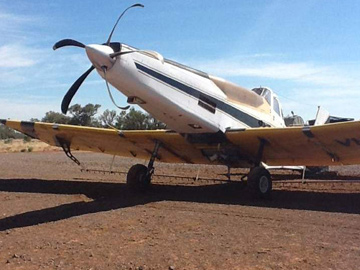
An accident where a radio failure prevented one pilot from warning another of a runway hazard highlights the importance of reliable communications.
On 22 February 2013, two Dromader aircraft were spraying cotton crops at Rumleigh (7km east-south-east of Brewarrina), NSW. One of the aircraft (TGY) was in the air while the other (TZJ) was being loaded with chemicals. TZY was about to take-off when its firebombing door unexpectedly released and spilled a large quantity of the chemical on the ground, contaminating the runway. (A firebombing door is attached to the aircraft’s hopper and enables a load to be released very quickly when it is used for fire suppression operations.)
The contamination created a layer of mud, which was not easily visible from the air. The pilot of TZJ tried unsuccessfully to contact TGY’s pilot to warn him of the hazard. The radio in TZJ had been working only intermittently since the previous day and had failed completely, so the broadcasts were not heard.
On landing, TGY crossed the contaminated area with one of its wheels and the mud caused it to slide and swing to the left. Eventually it pitched forward, and the propeller struck the ground. The pilot was not injured, and the aircraft sustained minor damage.
The pilot of TGY commented that it would be normal when they were unable to contact someone by UHF radio to send a text message by mobile phone or to place the mixers’ truck on the runway to provide an alert.
Having a reliable communications system or agreeing an alternative method of warning pilots of potential ground hazards will improve the efficiency and safety of an operation.
Read the report: Loss of ground control involving a PZL-Mielec M18A Dromader, VH-TGY, 7 km east-south-east of Brewarrina (Rumleigh), New South Wales, on 22 February 2013


